Claire Smith
Links

Food For Thought
If we were presented with the truth behind our food’s labels, would we eat differently? When researching how meat was produced in the United States, what I found shocked me. I was surprised to learn that many products labeled and marketed as “more ethical” than their competition were less innocent than they claimed. Graphic design has the unique power to serve people by increasing the accessibility of complex information. I enjoy using design to make complex and nuanced topics clearer by organizing information and visually synthesizing ideas, but I find it frustrating how design can also be used to manipulate. Grocery store labels can be misleading; they’re designed to maximize consumer appeal, but I question the ethics of a design system that creates more confusion than clarity. Armed with such an influential communication tool, I believe graphic designers have a responsibility to send honest messages. In my project, I’m focused on designing with integrity, giving consumers agency to make informed purchasing decisions by presenting the realities of the food they eat.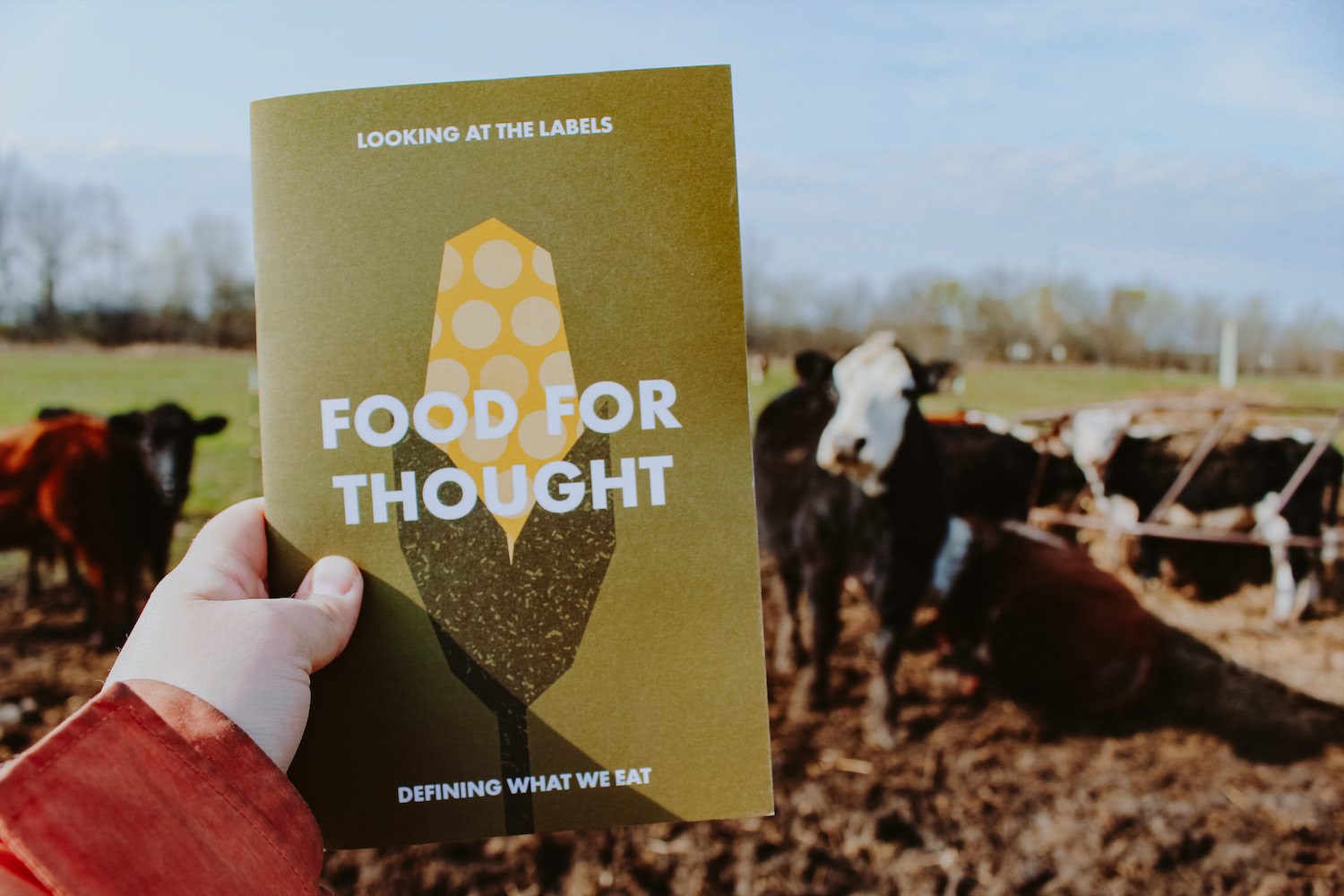
The book Food For Thought
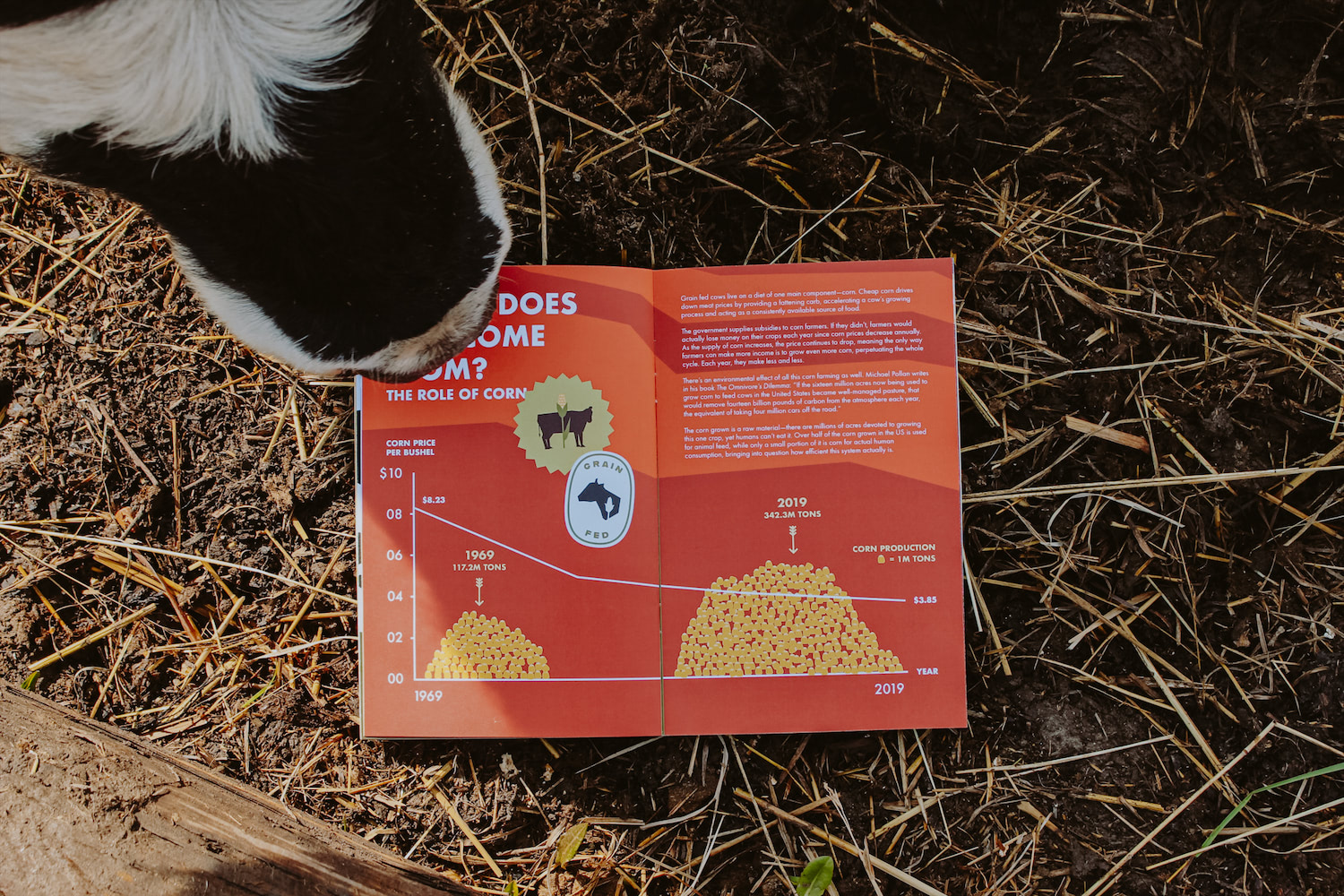
Where does beef come from?
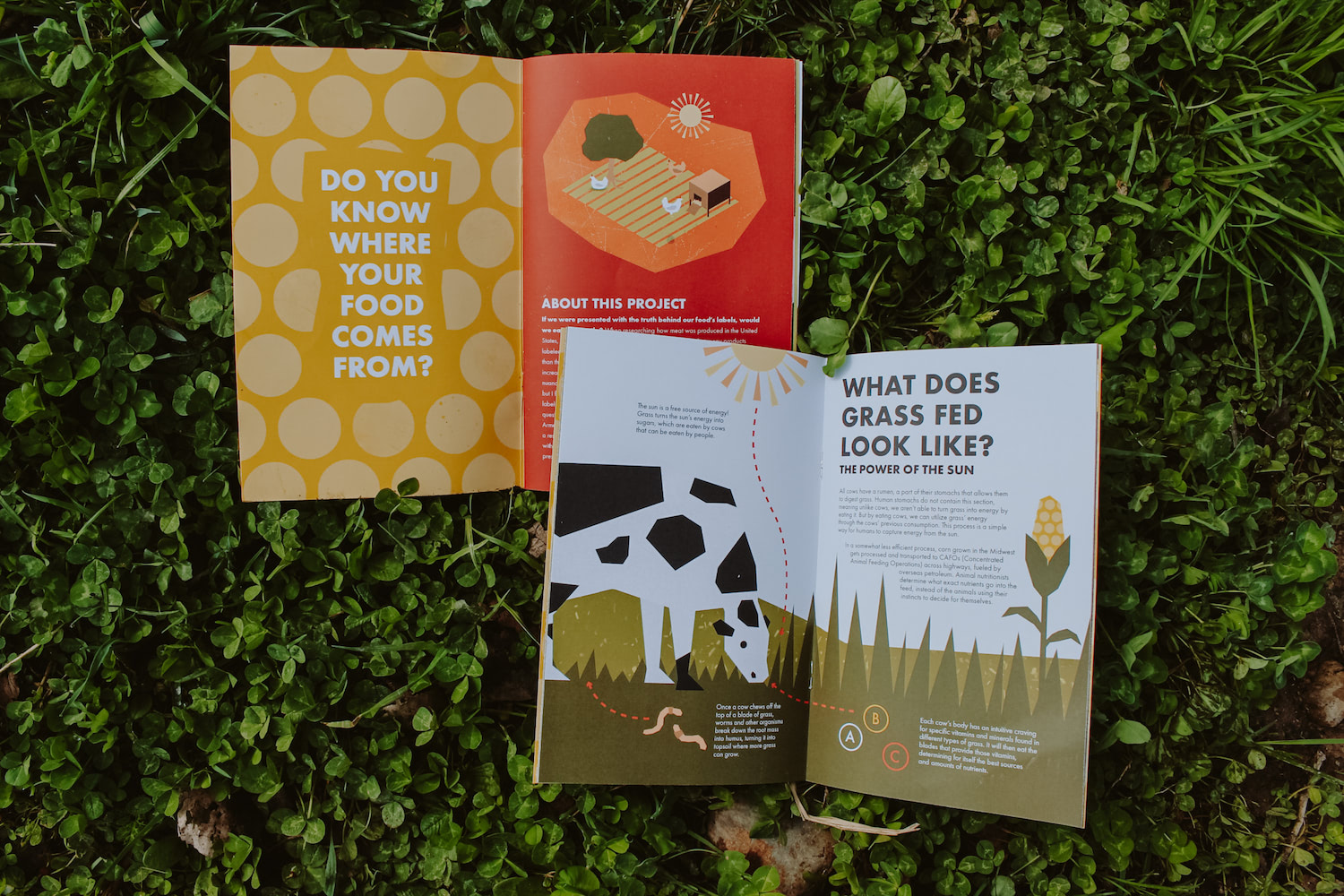
Opening spread + What does grass fed look like?
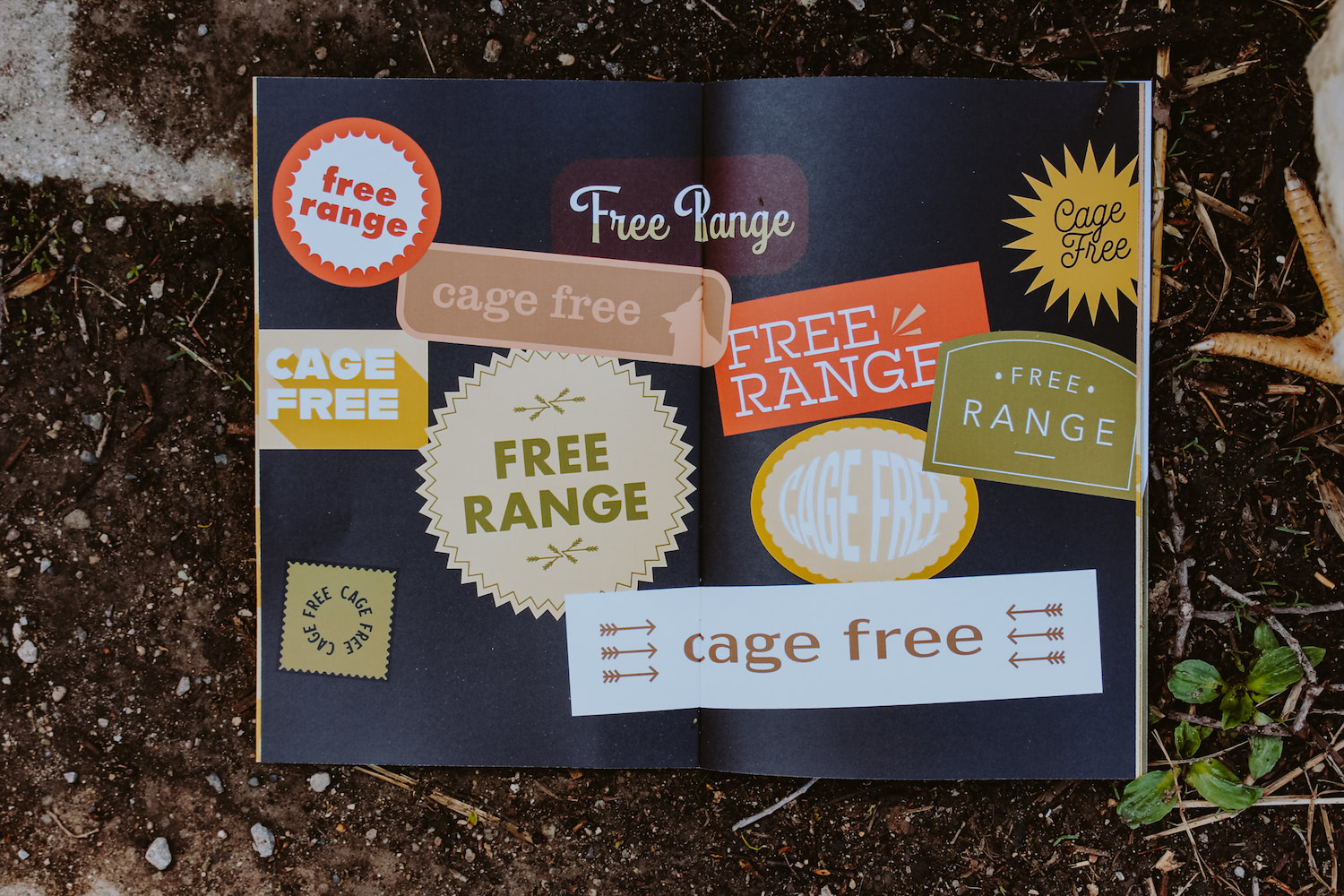
Cage Free/Free Range
Food For Thought – in its entirety!
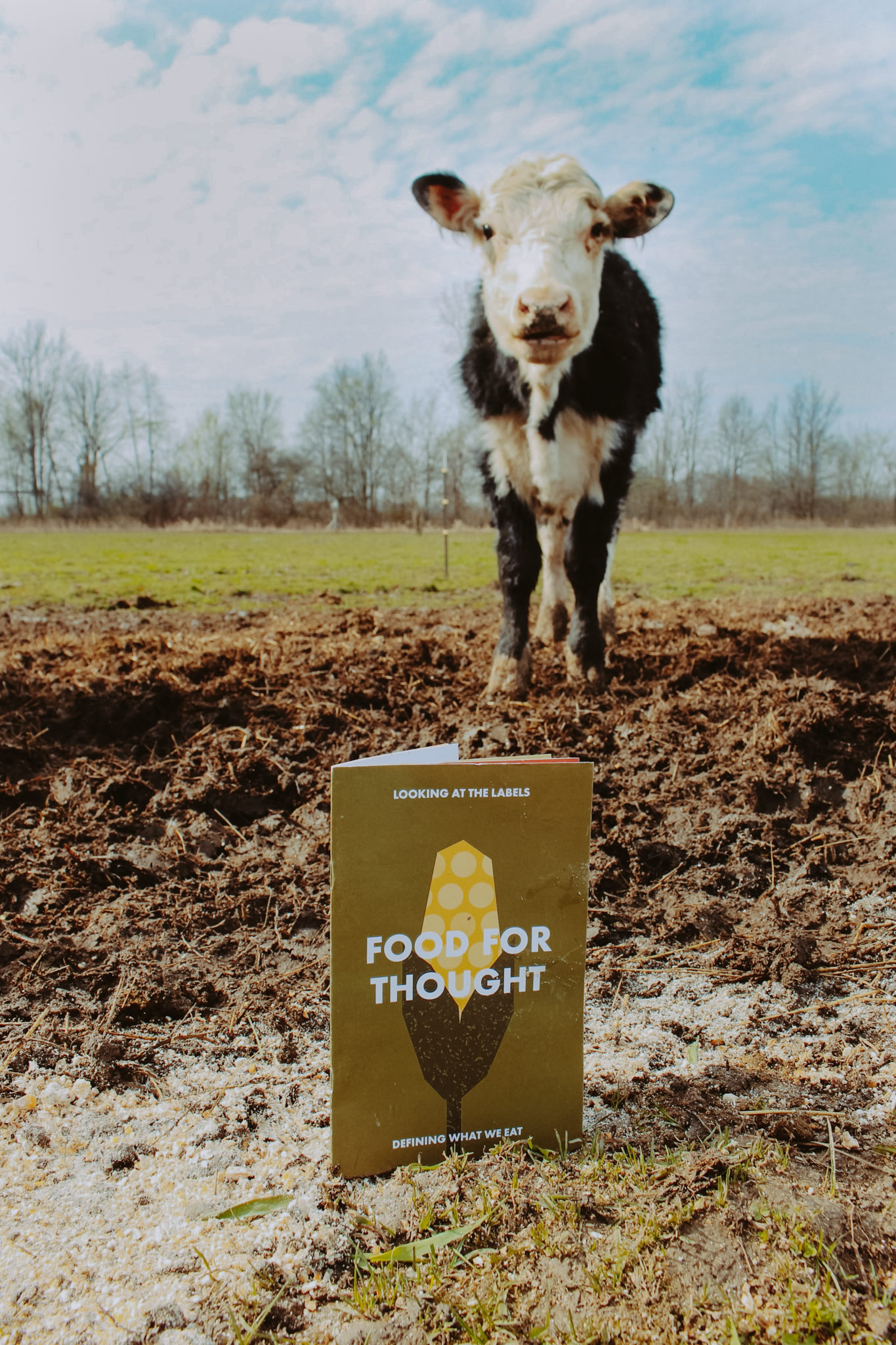
The book in the wild
